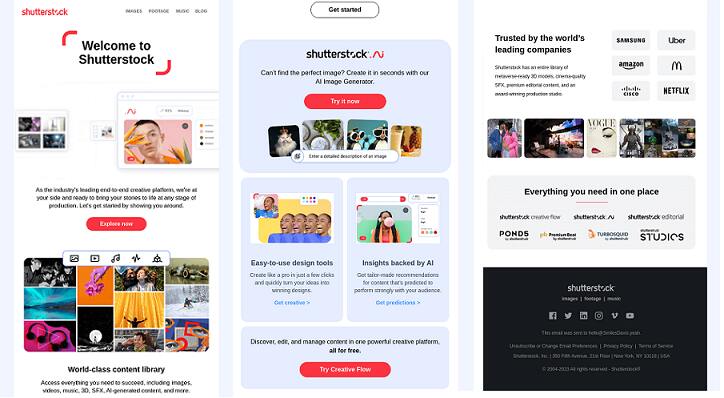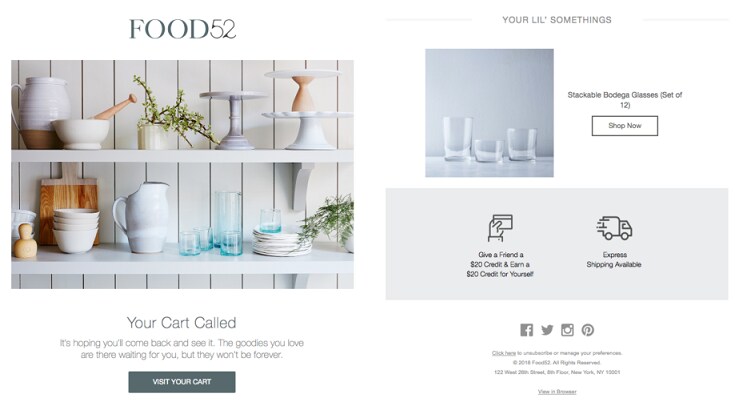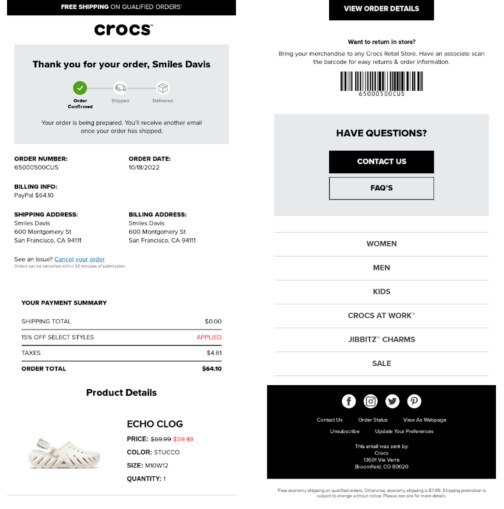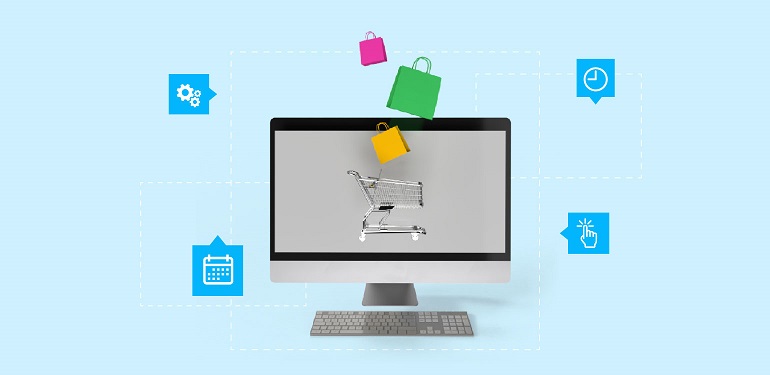Businesses and email marketers across the globe adore email automation. Why? Because it helps them streamline their marketing activities and better communicate with customers. But keep in mind that the success of your eCommerce marketing efforts largely depends on your choice of email automation solution and implementing practical techniques.
Most businesses use pre-defined templates to attain their email marketing objectives. You too can incorporate Klaviyo’s email templates to design impactful automated emails.Using its intuitive drag-and-drop editor, you can create email templates that align with your business goals.
Three Essential Tips to Boost your Ecommerce Business
Today, we talk about 5 automation workflows that every ecommerce business out there must employ. Read on to find out!
1. Welcome Email Automation

The first impression you make with a new customer is crucial. Therefore it’s essential to make a good one with a welcome email. They are the first thing a client sees after signing up or making an account, so they are your chance to make an excellent first impression. If you want to keep in touch with your consumers for the long haul, send them a warm welcome email. With Klaviyo email templates, you can design a charming and impactful welcome email from scratch, all in a matter of a few clicks.
Welcome emails should introduce your brand, thank customers for their interest or purchase, and provide helpful information. It’s a chance to highlight your company’s character, values, and USPs. The best way to make consumers feel valued and appreciated from the get-go is to greet them with a friendly and individual greeting.
Here are some things you can consider including in your welcome email:
- Start the conversation by using the customer’s name in your opening greeting. Thank them for joining or buying from you.
- Highlight the advantages they’ll receive from their involvement with your brand’s community.
- Give a quick rundown of your company, its goals, and its distinguishing features.
2. Abandoned Cart Email Automation

Emails sent to customers who have abandoned shopping carts can help eCommerce businesses recoup lost revenue. It’s a lost opportunity when a customer starts shopping online but doesn’t finish the transaction. Emails sent to clients whose shopping carts were abandoned provide helpful reminders about their items and prompt them to finish making their purchases.
Abandoned cart emails are much more likely to be read if personalized. Mention the consumer by name and specify the things they abandoned. Adding photographs, descriptions, and price of the abandoned items can prove to extremely beneficial. To further increase conversion rates, it is essential to have a prominent call-to-action button that sends the user straight to their shopping cart.
Future of eCommerce
3. Order Confirmation and Shipping Notification

Emails confirming an order and updating the consumer on its progress to delivery are essential parts of the online shopping experience. Such emails assure customers for they essentially act as digital receipts that validate their transactions. Moreover, they keep them up to date on the status of their orders. Sending order confirmation emails quickly establishes a professional demeanor that clients like.
4. Upsell and Cross-Sell Emails
Emails that upsell or cross-sell to customers are an effective way for online retailers to boost sales and increase their average order value. Email automation allows you to carefully recommend related or supplementary products to customers based on their browsing or purchasing habits. These emails can boost sales and patronage by showcasing complementary products the recipient may not have considered.
Taking a data-driven strategy when using email automation for upselling and cross-selling is crucial. To make suitable product recommendations, it is necessary to analyze client data such as purchase history, browsing behavior, and preferences. You can improve the likelihood of a sale by personalizing recommendations based on a customer’s tastes and buying habits.
5. Customer Feedback and Review Emails
Insights on client satisfaction and trustworthiness, and the ability to resolve possible chinks in your strategies are just some of the many benefits customer reviews and comments bring online retailers. Using email automation to solicit customer comments and reviews is a smart way to amass insightful data that can be used to improve your business and your brand’s reputation.
When asking for feedback via email, timing and frequency are two of the most important factors to consider. Understanding the fine line between soliciting comments and inundating clients with messages is essential. The rule of thumb is to send the buyer a feedback email a few days after they have received the product. This ensures that they deposit their feedback when the experience of using the product is still vivid in their mind.
Key Takeaways
While there are many more automation workflows out there, these five are extremely fundamental and must be incorporated into your marketing strategy. They help you offer a seamless user experience, letting your buyers know that you are not just trying to sell to them but also looking forward to developing a lasting relationship with them.




